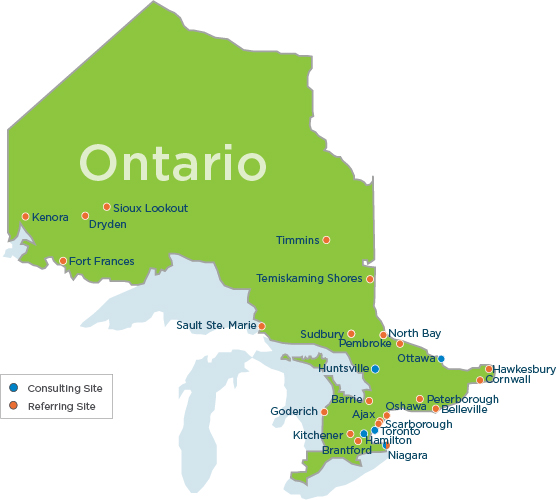More than a decade ago, a new approach to treating an acute stroke was developed that involved administering tPA within 3-4 hours of the onset of an acute ischemic stroke. tPA dissolves a clot and restores circulation, resulting in a dramatic patient recovery. Where tPA was effective, most patients were able to resume their lives rather than being permanently disabled with paralysis and/or neurological loss.
The issue with administering tPA is that not all strokes are caused by a blood clot; sometimes the strokes are caused by a hemorrhage into the brain. If tPA is given to these patients the stroke is made worse. The standard of care in most jurisdictions, is that a stroke neurologist needs to review the patient and CT of the head to assist in deciding whether tPA should be administered.
Unfortunately, there are very few stroke neurologists in Ontario. Moreover, they are almost entirely located at university teaching hospitals. Therefore, the only people who could benefit from this type of treatment were stroke patients who presented at one of these teaching hospitals – a majority of patients present to non-academic hospitals, however. Those in other areas of the province had to go without the assistance of a stroke neurologist, and the benefit of tPA.
The opportunity for OTN, was to bring stroke neurologists virtually to stroke patients in emergency departments, with access to a CT image service, anywhere in the province.
The opportunity for OTN, was to bring stroke neurologists virtually to stroke patients in emergency departments, with access to a CT image service, anywhere in the province. Our service video-enables these emergency departments, where local health care professionals use telemedicine to work with the stroke neurologist to assess whether patients would qualify, or benefit from tPA.
Initial deployment and growth
We started the Telestroke program in Timmins and District Hospital and North Bay Regional Health Centre, and the program has gradually expanded to a total of 22 referring hospitals across the province. Each hospital site participates in a rigorous review and consensus building process before it’s fully operational. This includes working with the local health providers in emergency to setup protocols for rapidly assessing stroke patients, getting a CT image, ensuring the stroke neurologist is available, and providing the image to the stroke neurologist online. Ambulance crews are also trained to inform the hospital in advance that a stroke patient is en route so the CT imager can be prepared to immediately image the patient, and other required examinations can be performed rapidly. All this has to occur within 4 hours of the stoke occurring for tPA to be effective. Organization and coordination is critical.

Map of Ontario Telestroke sites
The success of the program has encouraged examination and piloting of the Telestroke model to other complex emergencies, like trauma or burns. There is also further exploration of ongoing use of virtual care to support acute follow-up for stroke patients within the first 72 hours after a stroke, especially if the patient did not qualify for tPA and had complications. Stroke neurologists are also being asked to help in a patient’s ongoing care after they’re admitted.






